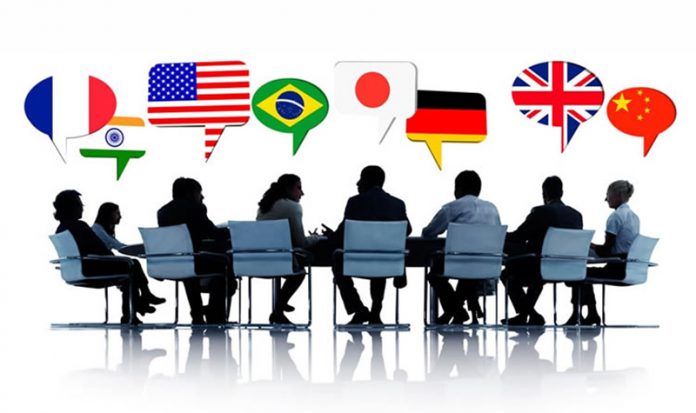In today’s global economy, at some point you’ll probably find yourself dealing with customers and clients from all over the world. But how do you communicate effectively when you’re all speaking different languages? Especially when it comes to running an international conference or business meeting, the answer comes in the form of translation services.
Different Interpretations
There are several main ways to orally interpret information that allows for people speaking different languages to understand one another. The one that best meets your needs depends on the type and size of your conference or meeting. In each, an experienced, skilled, culturally savvy interpreter takes what is said in one language and translates it into another.
Simultaneous interpreting: In this method, the interpreter is translating immediately after the speaker has finished a sentence. At the same time, they must be listening for the next sentence and getting ready to translate that one. The goal is to match the exact meaning of the speaker, and only highly skilled interpreters are successful in this type of pressure-filled environment. Simultaneous interpretation is similar to how the United Nations conducts assemblies, and the method most employed at big international conferences, meetings and trade shows where many languages are being spoken.
Consecutive interpreting: Here, the speaker stops every few minutes. At that point, the interpreter interjects, translating the complete thought of the speaker into the target language or languages. This back and forth style works best for small meetings, and is akin to when you’re flying and the safety announcements are played in several different languages. The most skilled consecutive interpreters of this sort are master note takers with strong recall skills.
Whisper interpreting: This is basically simultaneous interpreting without the fancy equipment. An interpreter sits next to the attendees who need translation services. They translate information as it is divulged, speaking in a soft whisper so as not to interrupt the flow of the meeting. This type of interpretation is best for small meetings and single-language translation needs.
Technology Needs
Consecutive and whisper interpreting require no special technology. A skilled translator is all you need to communicate your ideas to speakers of other languages.
Simultaneous interpretation, however, requires sophisticated equipment for both the translator and attendees. Here’s how it works:
- The main speaker talks into a microphone using the main (or “floor”) language. Their microphone is called the floor mic or floor feed.
- Interpreters are seated in a soundproof booth at the back of the room or sometimes in a separate room. They listen to the floor feed through translation headsets and interpret the information into another language, which is then broadcast to the audience.
- Attendees listen through special headphones, now hearing the message in their own language.
Simultaneous Interpreting Equipment
There are different types of equipment systems that allow for simultaneous interpretation. The first is infrared transmission. This is akin to how a television clicker works, using little pulses of invisible light. Attendee headphones have several different channels from which to choose, depending on the language in which they wish to receive the information.
This type of equipment is best for smaller and high security events as it has a relatively short range. Another benefit is this method is not affected by radio interference. Some drawbacks are that equipment can be negatively impacted by light interference, transmitters need to be positioned higher than the audience and cannot be covered up in any manner to work effectively, and set up can be complicated.
The other type of system uses radio transmission. In this method, information is sent through FM radio waves. Audience headphones have a choice of channels featuring different language feeds.
Radio transmission is more effective for larger groups. The equipment is not light sensitive, impeded by curtains or other physical obstacles, and is generally portable, adaptable to group size, and easily set up. The downside to this technology is that it can be affected by radio interference.
Assessing Your Needs
For a more intimate meeting or conference, you might find a skilled translator or two may sufficient to meet your interpretation requirements. If, however, you’re hosting a large international business meeting or conference and have attendees that speak a variety of languages, simultaneous interpretation equipment is key. But which should you choose?
To decide, consider meeting logistics and audience needs. Size will be a main indicator or whether infrared or radio transmission will work best. Next, consider your meeting or conference room. Are there physical obstacles that would preclude the use of infrared technology? Finally, assess how much equipment you’ll require and how many languages you need to accommodate. With proper planning, everyone will understand each other perfectly clearly.



































